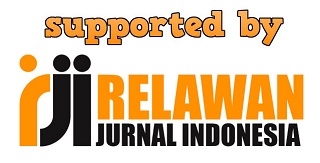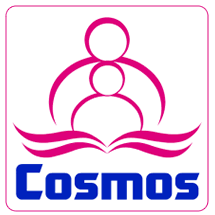Students’ Progress in Writing a Recount Genre; A Case Study at One of Junior High Schools in Tembilahan, Riau Province
DOI:
https://doi.org/10.61672/eji.v8i1.2696Keywords:
Writing, Recount TextAbstract
The Competence-Based Curriculum stated that the students must be able to communicate in English with each other, both in spoken and written languages by using appropriate variety of languages within transactional and monolog discourse, including Narrative, Recount, Descriptive, Report, and Anecdote. This study tried to explore the students’ progress in writing a Recount genre and what teaching and learning activities in which might lead to students’ progress. The present study was largely qualitative. The participants of the study were the eighth grade students and one teacher at one junior high school in Tembilahan, Riau Province. In order to gain valid data the study employed triangulation of data collection method in terms of students’ texts, classroom observation, and interview. The data were analyzed qualitatively with the help of some quantitative calculation. First, data from students’ texts were analyzed qualitatively to identify the schematic structure and thematic structure, and they were also analyzed quantitatively in terms of frequency and percentage to identify the tendency of linguistic feature occurrences. Second, data from classroom observation and interview were analyzed qualitatively. Next, data from observation were summarized and classified, and data from interview were transcribed and classified according the research questions. Finally data from the three sources were synthesized to answer the research questions. It is found that the students showed progress in writing a Recount genre. Data from the analysis of students’ writing showed that the students were able to create a Recount text with appropriate schematic structure and linguistic features. Additionally, they also applied good thematic structure in joint construction text and final text. Data from classroom observation showed that the students improved their attitude in writing activities from the first meeting to the sixth one. Data from interview with the teacher also showed that the students made meaningful progress in which they made fewer mistakes in grammar and punctuation. The teacher also said that the students used more appropriate English expressions. The findings of the study also reveal that the teacher employed genre based approach which involved: BKOF, MOT, JCOT, and ICOT stages. And the teaching and learning activities which lead to the students’ progress in writing Recount genre are the activities in BKOF, MOT, and JCOT. The results of this study are expected to provide information on the actual condition of teaching and learning activities in writing a Recount genre. They may also become useful sources for English teacher to investigate students’ progress and to provide informative input for other researchers who intend to conduct research in the same field with certain interest.
References
REFERENCES
Agustien, H. I. (2005). Implementing The Competence Based Curriculum: Making Students Write Different Genres. Yogyakarta: Presented in the 53rd TEFLIN International Conference.
Alwasilah, A. C. (2007). Language, Culture, and Education: A Portrait of Contemporary Indonesia. Bandung:Andira.
Anderson, M. and Kathy. (2003). Text Type in English 1. South Yarra: Macmillan.
Bogdan, R. C and Sari Knopp Biklen. (1988). Qualitative Research for Education: An Introduction to Theory and Methods. Boston: Allyn and Bacon.
Brown, H. D. (2001). Teaching by Principle: An Interactive Approach to
Language Pedagogy (II). Pearson Education, San Francisco: Addison
Wesley Longman, Inc.
Callaghan, M. R., J. (1988). Teaching Factual Writing: A Genre Based Approach. Sydney: Metropolitan East Disadvantaged Schools Program.
Callaghan, M., Knapp, P., and Noble, G., (1993). Genre in Practice. In Cope B. and Kalantzis, M., 1993. The Power of Literacy: A Genre Approach to Teaching Writing. Bristol: The Falmer Press, Taylor and Francis Inc.
Calkins, L. M. (1986). The art of teaching writing. Portsmouth, NH: Heinemann
Christie, F. (2005). Language Education in the Primary Years. Sidney: University of New South Wales Press Ltd.
Cope, B. and Kalantzis, M. (1993). The Power of Literacy: A Genre Approach to Teaching Writing. London, Washington, DC: The Falmer Press.
Derewianka, B. (2004). Exploring How Texts works. (Reprinted) Maryborough: Mcpearson’s Printing.
Duhita, A. R. (2005). The Implementation of Conference in the Process of Writing at: EFL Classroom: A Qualitative Study at LBPP-LIA Bandung. Master thesis at UPI Bandung:Unpublished.
Eggins, S. (1996). An Introduction to Systemic Functional Linguistics. Great Britain: Biddles Ltd, Guildford and King’s Lynn.
Emilia, E., (2005). A Critical Genre-based Approach to Teaching Academic Writing in Tertiary EFL Context in Indonesia: Unpublished Dissertation., Melbourne: The University of Melbourne.
Emilia, E, (1996). Principles and practices of the process-conference approach to writing. Unpublished thesis, Australia: Deakin University.
Feez, S.,and Joyce, H., (1988). Writing Skills: Narrative and Non-fiction Text Types. Putney, Australia: Phoenix Education.
Gibbons, P., (2002). Scaffolding Language, Scaffolding Learning. Portsmouth, USA: Heinemann.
Graves, D. H. (1983). Writing: Teachers and Children at Work. London: Heinemann.
Graves, D. H. (1985). “All children can write.” In B.M. Power,& R. Hubbard 1991. Literacy in process. Portsmouth, NH: Heinemann.
Graves, D. H. (1994). A fresh look at writing. Portsmouth, NH: Heinemann.
Gullef, V. (2002). Approach Genre: Pre-writing as Apprenticeship to communities of practice. In Johns, A. M. 2002. Genre in the Classroom: Multiple Perspective. Mahwah, New Jersey: Lawrence Erlbaum Associates, publisher.
Halliday, M.A.K. and Hasan, R. (1986). Language, Context, and Text: Aspects of Language in a Social Semiotic Perspective.Victoria: Deakin University.
Halliday, M.A.K. (1994). An Introduction to Functional Grammar. Great Britain: J W Arrowsmith Ltd, Bristol.
Johns, Ann M. (2002). Genre in the classroom: Multiple perspectives. (Ed). Mahwah, New Jersey: Lawrence Erlbaum Associates, Publisher.
Kress, G. (1993). ‘Genre as social process’. In Cope, B. and Kalantzis, M. 1993. (eds). The power of literacy: A genre approach to teaching writing. London: The Falmer Press.
Pusat Kurikulum Depdiknas. (2003). Standar Kompetensi Mata Pelajaran Bahasa Inggris SMP dan MTs. Jakarta: Puskur Balitbang Depdiknas.
Macken-Horarik, M. (2002). “Something to shoot for”: A systematic functional approach to teaching genre in secondary school science. In Johns, A.M. 2002. (ed). Genre in the classroom. Mahwa, New Jersey: Lawrence Erlbaum Associates, Publisher.
Martin, J.R. (1993). A Contextual of Theory of language. In Cope, B. and Kalantzis, M. 1993. (eds). The powers of literacy. A genre approach to teaching writing. London: The Falmer Press.
Martin, J.R. (1985). Factual Writing: exploring and challenging social reality. Australia: Deakin University Printery.
Maxwell, Joseph A. (1996). Qualitative Research Design: An Interactive Approach. London: SAGE Publication Ltd.
Merriam, Sharan B. (1998). Qualitative Research and Case Study Applications in Education. San Francisco: Jossey-Bass Publisher.
Murray, D. M. (1982) . Learning by teaching (Selected articles on writing and teaching). Montclair/Boynton: Cook Publishing Inc.
Murray, D. M. (1984). Write to learn. New York: Holt, Rinehart& Winston.
Nunan, D. (1989). Understanding Language Classroom: A Guide for Teacher- Initiated Action. New Jersey: Prentice Hall Ltd.
Nunan, D. (1999). Second Language Teaching and Learning. Messachusets:
Heinle and Heinle Publishers.
Richards, J. C., Platt, John., & Platt, Heidi. (1992). Longman Dictionary of Language Teaching & Applied Linguistics. England: Longman Group UK Limited.
Rivalland, Judith; Rohl, Mary, and Statkus, Susan. (Ed). (2006). Australian Journal of Language and Literacy. Australia: Australian Literacy Educator’s Association, Ltd.
Silverman, D. (1995). Interpreting Qualitative Data: Methods for Analyzing Talk, Text, and Instruction. London: Sage Publications.
Van Lier, L. (1988). The Classroom and the Language Learner. London and New York: Longman Group UK Limited.
Wray, A., Trott, K., and Bloomer, A., (1998). Projects in Linguistics: A Practical Guide to Researching Language. Great Britain: Arnold.
Downloads
Published
Issue
Section
License
Copyright (c) 2024 Rahmatunnisa Rahmatunnisa, Edi Susrianto Indra Putra

This work is licensed under a Creative Commons Attribution 4.0 International License.




















